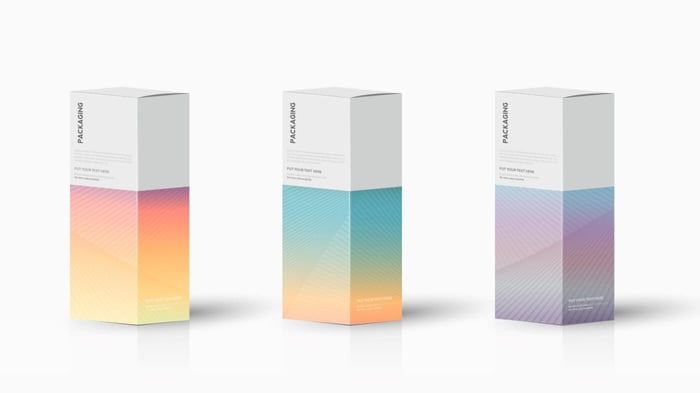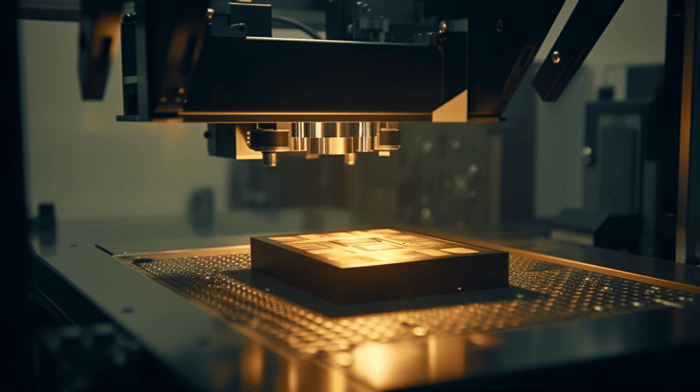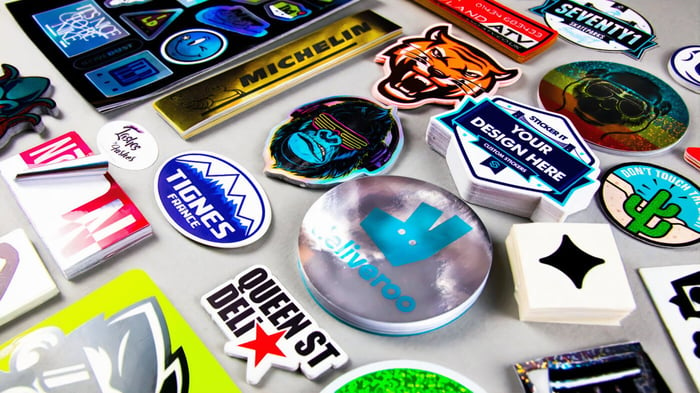Packaging design is an important art form that plays a crucial role in the modern world. Whenever a customer visits a store or purchases a product, they interact with packaging that has been carefully crafted from multiple perspectives. We believe that good package design is a deceptively nuanced skill that can make a significant difference in a product's success.
At its core, package design works within an expected formula that people have come to expect. For example, when purchasing a pair of shoes, customers expect the shoes to be in a shoebox. Similarly, toothpaste and tablets are expected to come in specific packaging. Good package design also serves a practical purpose, such as maximizing space while looking good and maintaining the integrity of the product inside.
Package design can be implemented to scale, such as with shoeboxes, or on an individual level, such as with personalized gifts. Before diving into the design process, it's crucial to understand the packaging objectives in detail. For example, a carton of milk does more than just hold liquid.
Table of Contents
Packaging vs Labeling vs Branding
Packaging, branding, and labeling are distinct terms, although they are often used interchangeably or incorrectly. Let's clarify the difference between them.
Packaging refers to the physical container or wrapper that holds a product, whether it's a packet of cheese or a smartphone. It is the material that keeps the product safe during transportation, storage, and display.

Labeling, on the other hand, is the information displayed on the packaging. This includes all the details about the product, such as the name, ingredients, nutritional information, and directions for use. Labels can be printed directly on the packaging or can be separate tags or stickers.
Branding is a much broader concept than packaging or labeling. It encompasses the emotional connection that a customer has with a company or product. Branding includes everything from the logo, color scheme, and font used in marketing materials to the tone of voice and values that the company embodies. Packaging can be a crucial element in building a brand, as it can help convey the company's message and create an emotional connection with the customer.
The Functions of Packaging

The accepted wisdom regarding packaging is that it serves seven specific functions and falls into four types. These functions are:
- Attracting buyers' attention and making them stop and take notice.
- Protecting the goods inside, ensuring that customers receive fresh and undamaged products.
- Being easy to open and use, providing a hassle-free experience for customers.
- Displaying relevant information and descriptions of the contents clearly, so customers can make informed purchasing decisions.
- Explaining the benefits of the product inside, so customers know what they're getting and why it's better than the competition.
- Providing important information such as warranties, warnings, and consumer information, including age ranges for toys, poison warnings, use-by dates, and whether or not batteries are required.
- Providing information related to value, price, and the product's use, helping customers determine whether the product is worth their investment.
The Three P's of Packaging
As a business, the packaging of your product is a core function that you cannot afford to overlook. In order to stand out against your competitors, you need to consider the three P’s of packaging: Protection, Preservation, and Presentation.
Physical Barrier
The primary goal of packaging is to provide physical or barrier protection for your products. Therefore, it is essential to use adequate materials to protect your products from damage, spoilage, and waste. Understanding the distribution process is critical in creating protective packaging that can withstand the conditions your package will have to endure during transportation and storage.

Preservation
Preservation is equally important, especially in industries dealing with perishable products. You need to consider the shelf life, temperature, humidity, and other environmental factors that can affect your products. By being mindful of these things, you can choose the right materials and packaging process to decrease the effects of spoilage and ensure that your packaging is well designed and stands out.
Presentation
Presentation is another crucial factor in packaging design. Your packaging should be visually appealing and informative, conveying your brand message to your target audience. Consider your demographic, end users, and how your packaging will assimilate with your in-store or online displays. This will help you create packaging that harmonizes all channels of your brand and attracts customers to your product.
In conclusion, good packaging must fulfill the three P’s of packaging: Protection, Preservation, and Presentation. By focusing on these aspects of packaging design, you can create a package that not only protects your products but also promotes your brand and stands out from your competitors.
The Four Types of Packaging
There are four main types of packaging that are used to protect products and meet different needs. These include anti-corrosive packaging, plastics packaging, pharma packaging, and flexible packaging.

Anti-corrosive Packaging
Anti-corrosive packaging is designed to protect the contents from the damaging effects of corrosion during transportation. This type of packaging often includes additional layers of bags, bubble wrap, and oils to prevent corrosion. It is commonly used for items made of metals that have to travel long distances or cross climate zones.
Plastics Packaging
Plastics packaging is used to protect non-perishable items from air, dust, and water. This type of packaging is ideal for small components such as headphones, toys, and batteries. It helps to keep the products safe from external elements while ensuring they remain in good condition.
Pharma Packaging
Pharma packaging, also known as "drug packaging", is a highly precise and sensitive type of packaging. It is designed to protect perishable and delicate contents such as surgical devices, dosages (liquids and solids), and even blood. This type of packaging is crucial in the medical industry, as it helps ensure the safety and efficacy of the contents.
Flexible Packaging
Flexible packaging is a type of packaging that is capable of changing shape without compromising the freshness of the contents. It is often used for perishable products such as food and beverages. Flexible packaging can take the form of bags, pouches, or even plastic wrap. It is an effective way to protect the contents while keeping them fresh and easy to transport.
Packaging Levels
Packaging can be categorized into levels based on their point of contact with the consumer. The more likely a customer is to open a package themselves, the more likely it is to be classified as "primary" packaging.
Secondary packaging refers to boxes that contain the primary packaging, like a 24-pack slab of beer, or the box that your goods were shipped in for mail-order packaging. It also includes add-ons like tape.

Tertiary packaging, on the other hand, is the larger package used for containing multiple goods, like bringing products from a factory to a shop's warehouse. Unlike primary and secondary packaging, tertiary packaging is usually not seen by the consumer. For example, our own poly mailers are an example of primary packaging for mail, while the shipping box that contains those poly mailers would be considered secondary packaging for us, but a tertiary package for the customer.
What Goes into Quality Packaging?
We believe that there are six key characteristics that differentiate quality packaging from mediocre ones. These attributes contribute to creating a memorable and attractive packaging design that effectively stands out in a sea of similar products.
Visually Appealing
First and foremost, great packaging should be visually appealing. A combination of factors such as colors, fonts, labeling, graphics, and images should blend seamlessly to create an eye-catching and unique packaging design. The ultimate goal is to create packaging that catches the customer's attention at first glance and stands out from the rest.
Informative
In addition to being attractive, packaging should also be informative. In many cases, laws require specific products to display relevant information such as health warnings or ingredients. However, consumers also appreciate additional information such as nutritional value, manufacturing and expiry dates, or usage instructions. The extent of information on packaging has evolved over time, taking into account customer preferences and needs.
Convenient
Convenience is another vital aspect of packaging. Whether it is moving products from the factory to wholesalers or displaying them on retail shelves, packaging should be easy to transport and store. Customers also appreciate packaging that is easy to use and dispose of.
Protective
Protecting the product is also a crucial characteristic of great packaging. Packaging must offer adequate protection for products during transportation and storage, ensuring they reach their intended destinations in good condition. It is especially important for fragile items such as glass products or electronics.
Cost Effective
Cost-effectiveness is an essential consideration when designing packaging. While packaging is a necessary expense, businesses must find ways to make it cost-effective without compromising on its quality or functionality. A well-designed packaging solution should not hurt a company's bottom line.
Eco-Friendly
Finally, eco-friendliness is becoming increasingly important in packaging design. From the manufacturer's perspective, it is vital to develop eco-friendly packaging solutions that minimize waste and pollution. Companies can also educate customers on recycling and reducing their environmental impact.

The Importance of Packaging
Think of the last thing you bought that you were excited about. Even though that candy bar/phone/dress was exciting in itself, the packaging was part of the story too.
It’s not surprising (at least to us!) that unboxing videos are so popular on YouTube. As YouTube said recently: “The amount of time people have spent watching unboxing videos just on their phones is the equivalent of watching the holiday classic Love Actually more than 20 million times.” Unboxing is anticipation - a magical moment.
Packaging is called “the silent salesman”
Like the best salesmen, packaging can sell to people who don’t even know they’re being pitched to.
Traditionally, this applied to items that were seen in shop windows and aisles; but the principle works for online shopping too. If a product is tastefully and distinctively packaged, it’s exciting to receive in the mail. And, naturally, this can drive repeat business.
You may not be thinking about packaging aesthetics so closely, but there’s a good chance your competitors are.
How packaging adds monetary value to the product
At this stage, you probably appreciate that a package is more than just a functional container. But how can it add monetary value?
Pricing is based on perception (among other things), and a package helps communicate its contents’ worth. Books are judged by their covers, coffee cups change with the seasons, and packaging often represents the products’ design philosophy (Apple is a classic example, with sleek, minimalist boxes for their similarly intuitive products).
Packaging Attracts Customers
There is a language to packaging that we all understand, even if we are not consciously aware of it. Good packaging designers use this language to communicate with customers and attract their attention.
Color is one of the most important elements of packaging design. Certain colors are associated with specific types of products. For example, children's cereals often feature bright primary colors, while organic foods tend to use earthy tones like brown and orange. Tech products often use black, white, and metallic blues and grays. Packaging designers use color to create a specific mood or feeling associated with the product.
Brand recognition is also crucial in packaging design. A logo can communicate a brand's identity in an instant, even without the use of text. Recognizable logos like the Nike swoosh, the Adidas leaf, or the Apple logo are examples of effective branding that can become assets for a product. Packaging serves as mini-billboards for the brand.
Branded packaging is a more recent trend in packaging design. Companies are designing packaging that is unique to their brand and instantly recognizable to customers. For example, the Red Bull can has become synonymous with the brand, and high-end fragrances like Gautier perfume use unique bottle shapes that represent the brand's identity.
Materials and packaging strength can also convey a message to customers. Strong, sturdy boxes suggest that the product inside is valuable and special. Recycled packaging sends a message that the company is environmentally conscious and values sustainability.

Designing Your Own Packaging
If you are looking to design your own product packaging, here are some tips to get started:
-
Start with your own logo and color scheme. If you have a logo and a specific color scheme, use those as a starting point for your packaging design.
-
Look for inspiration. There are many resources available online to get inspiration for packaging design. Check out our website, as well as other websites that specialize in packaging design.
-
Visit local stores. Go to your favorite stores and look at how products are packaged. Take notes and pictures of what you like about their packaging, including shape, design, size, colors, messaging, and materials.
To make your packaging design stand out, consider using packaging inserts to add a personal touch, customizing packing tape to incorporate branding and personality, and using printed packaging to give your product a unique and retro feel.
Creating unique packaging in a crowded market can be challenging, but with an open mind and some imagination, it is possible to design packaging that sets your product apart. Use these tips to create packaging that not only protects your product, but also reflects your brand identity and captures the attention of potential customers.






